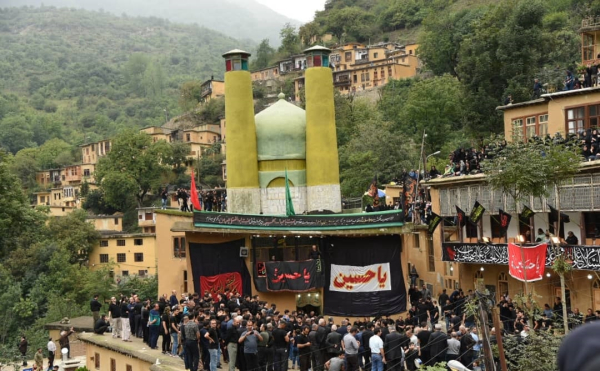Marine Commandant Gen. James Amos, in an interview with the Wall Street Journal, said that about half of the force, to be based in Kuwait, was in place, and the rest were on the way. Most of the troops come from Marine Corps bases in southern California, according to reports in the local press there.
The Marines are only the spearhead of a much larger US force in Kuwait, already numbering some 15,000 troops, including an entire armored brigade, which has only flat desert terrain separating it from the war zone in eastern Syria and western Iraq. Another 1,000 Marines from the 11th Marine Expeditionary Unit are stationed on board Navy warships in the Persian Gulf.
The deployment of the Marine Air Ground Task Force (MAGTF), as the new unit is called, was decided on before the current air war launched against ISIS in Iraq and Syria, officials said.
The decision came as part of a review of the security of US installations throughout the Middle East and North Africa in the wake of the September 11, 2012 attack on US facilities in Benghazi, Libya, in which US ambassador Christopher Stevens and three other Americans were killed.
Last year the Pentagon established its first MAGTF, headquartered at Morón, Spain, with some assets forward-deployed to Sigonella, Sicily, which is closer to Libya, Egypt and other points in the eastern Mediterranean. This force comprises 1,200 troops available for action anywhere in North Africa.
The second MAGTF, double the size of the first, will be headquartered in Kuwait, but its forces will be distributed to multiple locations in the Middle East, as yet unspecified. “The 2,100 troops will be stationed throughout the theater with the headquarters element in Kuwait,” Marine Corps Col. Kenneth DeTreux told Stars and Stripes, the semi-official military newspaper.
General Amos declined to discuss the specific tasks that the new Marine force might carry out. “All I am trying to do is provide another tool in the tool box,” he told the Journal. “This is a force ready for an array of mission sets.”
Among the likely missions is intervention into Syria or Iraq. This could include either a rescue-in-force of pilots of US warplanes shot down over ISIS-controlled territory in either Syria or Iraq, or reinforcement of the Marine garrisons guarding the US Embassy in Baghdad and the US mission in Erbil, capital of Iraq’s Kurdish region.
The Marines are equipped with attack jet fighters, transport planes and V-22 Osprey vertical take-off and landing planes, which enable them to move within hours to a targeted area.
The announcement of the Marine deployment came at the end of the second week of US bombing of Syria, nominally directed at the ISIS, the fundamentalist group that overran much of western and northern Iraq during the summer.
The ultimate goal of the US intervention, as Obama administration spokesmen have repeatedly declared, is the ouster of Syrian President Bashar al-Assad, who is allied to Iran and Russia, the two main targets of American imperialism in the region.
While the Obama administration has sought to use the crimes of ISIS, such as the beheading of prisoners and the slaughter of minority religious groups, to sway public opinion in the United States, US allies like Saudi Arabia and the other Gulf despotisms have made it clear that they are mainly concerned with overthrowing Assad.
The latest recruit to the US-led “coalition,” the Turkish government of President Recep Tayyip Erdogan, was even more explicit about this goal, as the Turkish parliament voted Thursday for a measure to allow Turkish troops to enter Iraq and Syria and to permit foreign troops to use Turkish territory.
The new law would allow Turkish troops to create a buffer zone inside Syria to prevent refugees from crossing the border. It would also allow the US to use its airbase at Incirlik, near the Syria-Turkish border, to launch airstrikes against targets in both Syria and Iraq.
In a speech before the vote, Erdogan dismissed the US-led bombing campaign against ISIS as ineffective and pointless, saying, “Tons of air bombs will only delay the threat and danger” of terrorism. He renewed his call for the ouster of Assad. This was echoed by Turkish Defense Minister Ismet Yilmaz, who told parliament, “The main source of ISIS is the Syrian regime.”
The parliament passed authorization for Turkish military action by a vote of 298 to 98, with many of those opposing the bill advocating an even more aggressive role, and criticizing Erdogan for failing to enforce border controls against the influx of militants through Turkey and into the Syrian conflict.
Turkish Chief of Staff Necdet Ozel gave another pretext for possible military intervention in Syria, saying that the army was ready to act in defense of a small Turkish unit deployed in northern Syria to guard the tomb of an ancestor of the founder of the Ottoman Empire. The tomb of Suleyman Shah has been treated as Turkish territory under a longstanding arrangement with the Syrian government, with a token honor guard that is now surrounded by ISIS forces.
As these military and diplomatic maneuvers took place, there was heavy fighting in both Syria, around the Kurdish-populated town of Kobani, on the Turkish border, and in Hit, a city on the Euphrates River that has been largely overrun by ISIS. Hit is 115 miles northwest of Baghdad and a hub for oil pipelines.
In the Syrian city of Homs, the country’s third-largest, some 39 people, most of them children, were killed in two car-bombings near a school in a pro-Assad neighborhood. The district, known as Akrama, is largely populated by Alawites, the Shiite-linked sect to which the Assad family and most of the regime’s inner circle belong. It has been repeatedly targeted for terrorist attacks by the al-Nusra Front and other Syrian “rebel” groups.


















